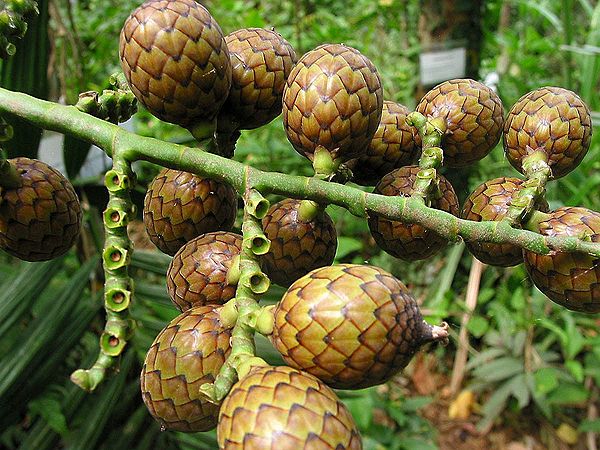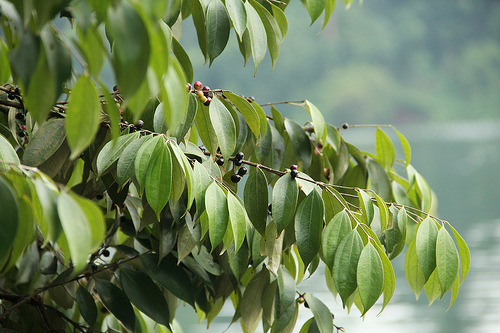Calamus scipionum
Common Name: Semambu rattan
Local Name: Rotan Semambu
Family: Arecaceae
Habitat: It is a widespread lowland species rarely occurring above 200 m altitude. It appears to favour better soils such as alluvial soils in the floodplains of rivers. It is very tolerant of forest clearance, and is often found in secondary forest. C. scipionum has not been found in primary lowland dipterocarp forest.
Description:
Massive clustering rattan climbing to great heights, reaching lengths of 50 m or more. Stem without leafsheaths to 2535 mm in diameter, with rather prominent nodes, and slightly lopsided in transverse section; internodes very long, sometimes exceeding 1 m, with sheaths 50 mm in diameter. Leaf ecirrate to about 2 m in length; leafsheath midgreen, armed with large, triangular, flattened, yellowishbased, black spines to 5 cm long and 1.5 cm wide at the base, and abundant grey indumentum when young; knee conspicuous; ocrea short, quickly tattering; flagellum massive, dark green, frequently exceeding 7 m in length, armed with whorls of black tipped, reflexed spines; petiole to about 30 cm; leaflets about 25 on each side of the rachis, regularly arranged, the lowermost to 40 cm×3 cm, midleaflets to 60 cm×6 cm, the uppermost to 20×3 cm, very sparsely bristly at tips. Inflorescences male and female, superficially similar, to 6 m or more in length with about 7 short to elongated partial inflorescences, sometimes to 1.5 m long, with slender reflexed rachillae in the female, and finely branched rachillae in male. Ripe fruit ovoid, to 14 mm×9 mm, very shortly beaked, covered in 1415 vertical rows of dull green scales. Seed ovoid, about 10 mm×5 mm with scattered pits, the pits penetrating very slightly the otherwise homogeneous endosperm. Seedlingleaf with 4 leaflets displayed in a fan.
Plant Part Used: Stem
Preparation: Sap collected
Administration: Oral: drink
Symptom: Fever
References:
Manokaran. 2016. Calamus scipionum. Plant Resources of South-East Asia. http://uses.plantnet-project.org/en/Calamus_scipionum_(PROSEA).

















































